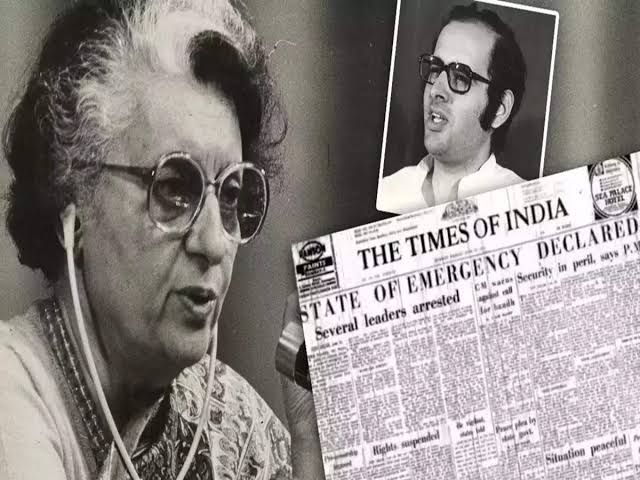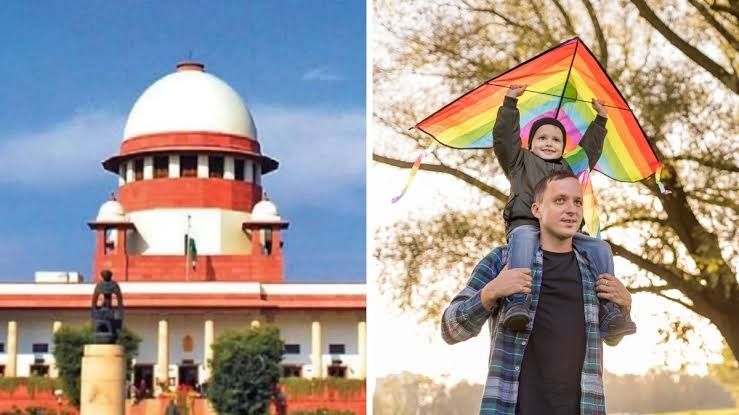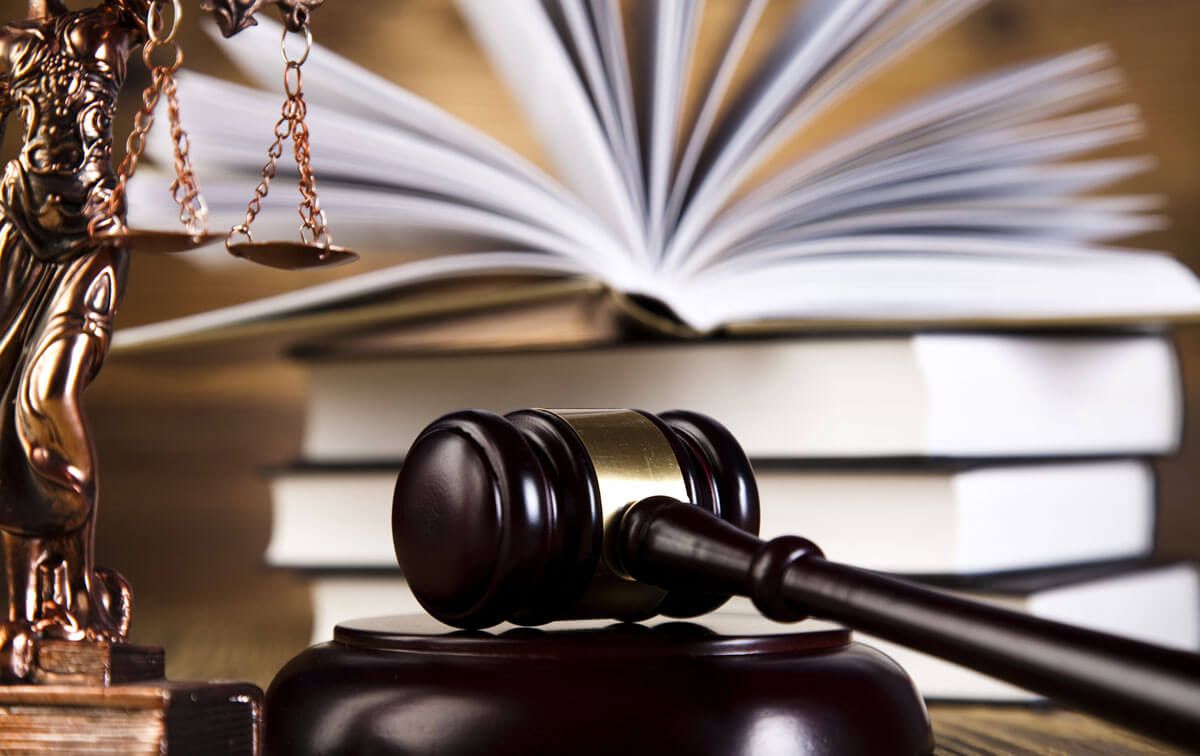Author: DEBOSMITA DAS , AMITY UNIVERSITY KOLKATA.
ABSTRACT:
The Emergency’s inception is frequently seen as a dark period in the history of independent India. A state that declares an emergency suspends certain of its people’ fundamental rights for a set period of time inside its borders. There were allegations of widespread abuses of human rights and severe press censorship. 1. The constitution’s third section established fundamental rights. These are some of the rights necessary for a dignified human existence. India had an emergency from June 25, 1975, to March 21, 1977; the exact date of this period was hotly contested in political and scholarly circles. The President may declare an emergency in any region of the nation thanks to the 42nd Amendment Act. We choose this subject because it been one of the most significant problems in Indian political history to far. Data from already-available secondary sources are used in our research. To gain a feel of the circumstances, we’ll also be reading some novels and journals. This essay will discuss several kinds of crises, how they are declared and revoked, a number of facts and arguments in favour of and against them, but whatever occurred at the time was concerning, as was the concept of democracy during the emergency. It is important to remember that no administration should ever again deny India’s democratic and constitutional freedoms. This essay investigates the factors that contributed to the declaration of 1975 and verifies its accuracy.
INTRODUCTION :
A circumstance where the nation’s constitutional structure collapses is referred to as a “emergency”. When a foreign attack, armed uprising, or conflict threatens the security of India or any region inside the country, the President of India has the power to declare a state of emergency. Anywhere in India, he may declare an emergency.
The event need not really happen for Article 352 to apply. The emergency era in India refers to the 21 months between 1975 and 1977, when Prime Minister Indira Gandhi declared a state of emergency across the country. An emergency occurred from June 25, 1975, until March 21, 1977.
The President of India may only declare an emergency with the approval of the Cabinet Ministers, not only on their suggestion. The term “emergency” is used to describe situations in which the Prime Minister, like Indira Gandhi in June 1975, advises the President to proclaim one without first consulting the Cabinet.With the exception of Articles 20 and 21, all legal obligations and fundamental rights are immediately suspended upon the declaration of emergency. This becomes a turning point in political history. “Internal disturbance” has been substituted by “armed revolt” in the 44th Amendment. The President may proclaim a state of emergency in any part of the country under the 42nd Amendment. If circumstances there get back to normal, the state of emergency can be lifted, but it can still be in effect in other parts of the country. Given the resistance. After the Allahabad High Court ruled that Indira Gandhi’s election to the Lok Sabha was illegal and that the emergency she imposed was void, the party has called for a campaign to force the Prime Minister to step down.The article discusses the many emergency supply types that are available in India and how they have evolved over time.
RESEARCH QUESTIONS :
- What are the types of emergency and how they are proclaimed and revoked.
- Grounds or reasons for proclamation of emergency in India during 1975.
- How the idea of democracy changed after the 1975 Emergency
RESEARCH METHODOLOGY
The research for this topic has been conducted through secondary data. The data or information are collected from various articles and websites.
TYPES OF EMERGENCIES :
- • National Emergency: Before declaring an emergency, India’s security must be ensured. An emergency declaration is made when India’s security is threatened by a bloody insurrection, an outside invasion, or a war.Article 352 of the Indian constitution gives the President the authority to declare a state of emergency after consulting with the cabinet ministers. India has issued a state of emergency three times. The first proclamation was issued on October 26, 1962, and it remained in effect during the Indo-China War until January 10, 1968.For the second time, there was an outside attack during the December 3, 1971–March 21, 1977 conflict between India and Pakistan. Indira Gandhi declared a third national emergency on June 25, 1975, citing domestic violence as the reason.
- State Emergency: An official declaration of emergency is made when anything goes wrong with the state’s constitutional apparatus. A state of emergency is defined under Article 356 of the Constitution.The state governor, certain that the state’s constitutional apparatus is broken, reports to the president, who then confers with the council of ministers before announcing a state of emergency. Once a state of emergency is proclaimed, the state legislature is dissolved. Punjab was the first state in India to proclaim a state of emergency.
- Financial Emergency: When the creditworthiness and financial stability of the country are in jeopardy, a state of emergency is declared. In certain circumstances, the government may reduce the pay and perks of judges, including those of the supreme court and subordinate courts.India has never had a situation like this. An urgent financial situation As described in Article 360 of the Constitution.
Procedure to Declare National Emergency:
- Although the president of the country is free to speak, some topics have already been discussed. Only in the case that the Cabinet requests in writing that the President proclaim a real emergency.
- A declaration of emergency must be overwhelmingly approved by the members present and voting in the Houses of Parliament within thirty days, or it will expire without further action.The emergency management meeting will be allowed in the month after the commencement of the Rajya Sabha’s next session if the Lok Sabha is dissolved or fails to show up.
- The state of emergency is in place for another six years, or until Parliament ratifies it. After six months, the Legislature must issue another interim rule. It became clear that this was a continuing emergency.
Procedure to Revoke National Emergency:
- The President may, at any time, repeal the proclamation of emergency by proclamation without the consent of parliament. If the President is certain that the threat has passed, he may revoke the declaration of emergency at any moment.
- If the Lok Sabha takes a different decision, the President has the power to revoke the emergency.
- The state of emergency may be removed at any time and the Lok Sabha lacked the power to reject it prior to the 44th Amendment Act.
- The 44th Amendment Act further stipulates that the emergency would terminate if the speaker gets a written notification from the tenth Lok Sabha member.
Procedure to Declare State Emergency:
- As during the National Emergency, the Houses of Parliament should have been consulted before making such a pronouncement. In this instance, the declaration would cease to function if a permit were not given in less than two months.
- If the Lok Sabha is dissolved after part of these two months and the Rajya Sabha has approved it, the resolution will no longer be in force on the thirty-first day after it was reinstated on the day of the first session of the Lok Sabha. The reason for this is because the Lok Sabha was authorised far in advance of its expiry.After six months, unless rescinded, an authorisation announcement loses its effect immediately.
- Generally, its validity can be prolonged for an additional six months without being revoked, but not for three years. The State must then restore its regular legislative machinery and put a stop to the President’s Reign.
- A new clause in the 44th Amendment restricted Parliament’s power to an announcement made under Article 356 after a year.
Procedure to Revoke State Emergency:
- • The requirements for establishing and terminating such an emergency, together with their respective durations, are outlined in our constitution.
- If the Lok Sabha has dissolved or a proclamation has been made at that time, if a resolution declaring an emergency has been voted by the council of ministers, or if there has been no decision of that kind, the proclamation of emergency must be delivered to the Rajya Sabha and Lok Sabha, the two houses of parliament, unless it revokes a prior proclamation.
Procedure to Declare and Revoke Financial Emergency:
- The process for issuing and withdrawing the declaration of emergency is identical to that for a national emergency. In India, the financial emergency has never been declared.
- The president may withdraw a Financial Emergency declaration at any moment with a new proclamation. Parliament does not need to approve such a declaration.
EVALUATION AND STATE OF WORK WITH S.R BOMMAI VS UOI:
In the Indian Constitution’s history, the seminal case of S. R. Bommai v. Union of India has significant ramifications for Center-State relations. The Supreme Court bluntly outlined the parameters that Article 356 must adhere to in this particular situation. In its ruling in the case, the Supreme Court of India stated that it is well established that Article 356 is an extraordinary authority and should only be utilised as a last resort when it is obvious that a State’s constitutional machinery has broken down. The Sarkaria Commission’s concerns are shared by the opinions voiced by the case’s bench.What opinions do judges have on Article 356 of the Constitution of India In this instance, the court observed that the President’s authority under Article 356 is a conditional one. It’s not the whole force. Prerequisites include the need for resources to be available, including the Governor’s paper. Related materials must be specified and reasonable to be enjoyed.
In a similar vein, the President may only use Article 356 of the Constitution to enforce its provisions if he or she is persuaded that a situation exists that makes it impossible for a State to run its government in accordance with the requirements of the document. The Council of Ministers of the Union, headed by the Prime Minister, is fundamentally in charge, as per our Constitution.The essay’s vision of happiness is immaterial. Thus, the personal enjoyment might be whether it is based on purpose may be contested in court.
Only when approved by both Houses of Parliament, as per Article 356, paragraph 3, may the Governor declare a state of emergency. Only by removing the constitutional provisions related to the Legislative Assembly in accordance with paragraph (c) of clause (1) may the President suspend the Legislative Assembly until such consent is granted. Nonetheless, the dissolution of the National Assembly may only be imposed insofar as it is necessary to achieve the Declaration’s organisational goal.
When Article 35’s Clause (3) expires at the end of the two-month term, the rejected government becomes resurrected in the event that both Houses of the Parliament of the proclamation. Additionally, the Legislative Assembly revives any potential discontinuations. Similarly, after the proclamation expires, the acts, directives, and rules made during that two-month period do not, in the same way, lose their constitutionality.
Should both Houses approve the Proclamation during the next two months, the dissolved government will not reinstate the proclamation or remove it until the start date has passed. Similarly, unless the Legislative Assembly is dissolved upon confirmation as per clause (3), it will not reconvene following the expiration of the declaration’s time limit or its revocation.
The court’s main contention in this case is that Article 74(2) simply prohibits asking whether or not the negotiators advise the Chairman. It doesn’t stop the Tribunal from requesting that the Union of India’s Council of Ministers provide the details that the President was happy with.
The advise does not contain the information on which it is based. The material does not share the suggested personality, even if the President discusses it after seeing it. Many locations are protected by sections 74(2) and 123 of the Proof Act. The Minister or relevant official may request rights under Article 123 while the declaration is being protected. In accordance with Section 123’s regulations, the assertion of a right of this kind should be evaluated according to the individual’s standards.
CONCLUSION :
The Indian constitution was draughted following extensive research, a protracted study period, and careful thought. The most important emergency supply is the one that is used promptly and cautiously. Even if the provisions remain in place, they have shown to be ineffectual over time, becoming progressively less sufficient while also giving the government more power. Only by uniting and offering safeguards against the use of emergency powers can India succeed. It seems logical that the Indian constitution has measures for handling emergencies. After debating every procedural requirement, it is evident why it was imperative to make those criteria relevant to the Constitution first and foremost. Even if the goal of our inquiry was the same, nevertheless. Even while regulations concerning the well-being of citizens and rules by itself provide the Executive a significant level of dramatic discretion, even after taking into account national security. In fact, Mrs. Gandhi and the Congress were unable to build any new institutions devoted to social change or public organisation methods, therefore no major progress along the charted track could be achieved. The development projects were left to be completed by the same old dishonest and inept bureaucracy and dishonest and unscrupulous politicians. The lack of outlets for protest meant that the general people was unable to voice their grievances or find a solution, which caused the situation to worsen. It has a big influence on the country’s territorial organisation and uses a majoritarian approach to safeguard community and individual aspirations. Even while we recognise its significance, we both believe that, unlike the emergency of 1975, a check-and-balance system should be put in place to stop the president and the governing party from abusing their positions of power. We all agree that human rights are essential to people’s basic existence in a democracy, despite the fact that their revocation has frequently been justified. In light of the 44th Amendment to the Constitution, which stipulates that there are always methods to unfairly violate fundamental rights in an emergency, our research demonstrates that this is true even with the safety precautions that were introduced following our examination. Similar to how several other federal constitutions, such as those of Australia and Canada, provide the courts the authority to determine the degree to which The centre has the ability to expand its jurisdiction and will act as a unified framework to validate the unlawful exercise of the executive and legislative branches’ discretionary powers under emergency protocols.





